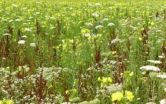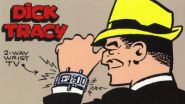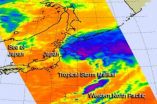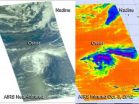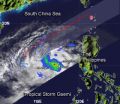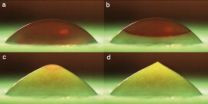(Press-News.org) CORVALLIS, Ore. – More than 40 percent of older breast cancer survivors are insufficiently active after leaving a supervised program. But new research shows that those women who developed behavioral skills such as self-confidence and motivation during their program were far more likely to continue exercising on their own.
Regular exercise may reduce the risk of breast cancer recurrence and breast cancer-related mortality, experts say, making it crucial to effectively target breast cancer survivors who do not engage in regular physical activity for interventions.
Researchers at Oregon State University partnered with researchers at Oregon Health and Science University who had conducted a clinical trial to understand the benefits of a 12-month supervised exercise program in 69 older breast cancer survivors. The goal was to discover what factors influenced participants' ability to follow-through and continue exercising after the supervised program ended.
They found that breast cancer survivors with higher self-efficacy, or confidence to overcome exercise-related barriers (such as being too tired), were far more likely to continue exercising on their own. Those with higher self-efficacy scores were 10 percent more likely to be physically active six months after the intervention than those with lower scores.
The results of the study are published in the October issue of the journal Supportive Care in Cancer. It is the first study to assess predictors of behavior after a supervised exercise program in older breast cancer survivors.
Paul Loprinzi, lead author of the study, was a doctoral student at OSU when he did the research. Loprinzi, who is now a faculty member at Bellarmine University, said the good news is that behavioral skills to increase self-efficacy can be taught.
"We can teach breast cancer survivors how to enlist the support of others and how to identify exercise-related barriers, as well as provide proven strategies for them to overcome those barriers," Loprinzi said.
The researchers said everyone should meet physical activity guidelines – and it can be even more crucial for breast cancer survivors. Loprinzi said exercise helps reduce common side effects of cancer treatment, such as fatigue, depression, decreased muscular strength and weight gain.
"Especially important is minimizing weight gain after breast cancer treatment because excessive weight gain can increase the risk of developing reoccurring breast cancer," he said.
Bradley Cardinal, professor of exercise science at OSU and one of the study's authors, said instructors who administer supervised exercise programs for breast cancer survivors can help by modeling behavior.
"When people who lead the classes are cancer survivors themselves, this can help because they become a role model," he said. "Also, they can help prepare the participants for that time when they have to exercise on their own."
Cardinal said in a past study done at his lab, he found several ways to develop behavioral skills that help people succeed at regular exercise. For instance, "counter-conditioning," or substituting a positive behavior for a problem behavior, such as taking a walk whenever feeling stressed, can be effective.
"In making the transition from group to being on your own, committing yourself by developing an activity schedule and identifying activities that are enjoyable, even signing a 'contract' with a social support partner would be useful," Cardinal said.
Also, having a network of friends, family or providers who provide encouragement and support is also a factor that helps people to stick with exercise.
"Rewarding yourself for small successes and gradually building on that is also important," he said. "It is critical to not expect too much too soon. And fitness instructors and future exercise scientists can help by preparing them before the last day of class on what to expect when they go from that group exercise environment to an individual setting."
In addition, Cardinal said he would like to see policy makers address the issue of support for cancer survivors.
"We know survivors of breast cancer are much more likely to stick with exercise if they have that structured, group support," Cardinal said. "Ideally, it would be great if insurance programs provided for that post-treatment supervised exercise longer than one year. But in lieu of that, we can help them build the skills to continue on their own successfully."
INFORMATION:
The exercise study which provided data for Loprinzi's publication was funded by the National Institutes of Health by a grant to the study's co-author, Kerri Winters-Stone of OHSU.
END
At first blush, many people would probably love to get rid of insects, such as pesky mosquitoes, ants and roaches. But a new study indicates that getting rid of insects could trigger some unwelcome ecological consequences, such as the rapid loss of desired traits in plants, including their good taste and high yields.
Specifically, the study--described in the Oct. 5, 2012 issue of Science and funded by the National Science Foundation showed that evening primroses grown in insecticide-treated plots quickly lost, through evolution, defensive traits that helped protect them ...
Suicide is the third-leading cause of death for teens, according to the Centers for Disease Control and Prevention. Now, a University of Missouri public health expert has identified factors that will help parents, medical professionals and educators recognize teens at risk for self injury and suicide.
"For many young people, suicide represents an escape from unbearable situations—problems that seem impossible to solve or negative emotions that feel overwhelming," said Lindsay Taliaferro, an assistant professor of health sciences at MU. "Adults can help these teens dissect ...
ALBUQUERQUE, N.M. – Sandia National Laboratories published the second annual 2012 Wind Plant Reliability Benchmark on Monday, and the results should help the nation's growing wind industry benchmark its performance, understand vulnerabilities and enhance productivity.
Until now, wind farm owners and operators had no way to compare their output with the output of similar operations. To benchmark the reliability of the U.S. wind turbine fleet and identify major causes of failures and downtime, the DOE commissioned Sandia in 2010 to build the Continuous Reliability Enhancement ...
To believe that technologies once dreamed of in science fiction novels, television shows, and comic strips may one day be a reality, or that real-world technologies might make the fantastic devices of fiction obsolete, you'd need to be either an optimist…or a futurist in the Department of Homeland Security (DHS)'s Science and Technology Directorate (S&T).
To keep dreams grounded, S&T maintains a team of futurists in Arlington, Va., at the Homeland Security Studies & Analysis Institute (HSSAI). There, in the Resilience and Emergency Preparedness / Response Branch, analysts ...
Tropical Storm Maliksi is putting the final touches on Japan, that is, the edge of the storm was seen brushing the country's northern coast as it pulled away on NASA satellite imagery.
NASA's Aqua satellite passed over Tropical Storm Maliksi on Oct. 4 at 0329 UTC (11:29 p.m. EDT, Oct. 3, EDT) and the Atmospheric Infrared Sounder (AIRS) instrument captured an infrared image of the storm brushing the Tohoku and Hokkaido prefectures of northern Japan.
On Oct. 4, 2012 at 1500 UTC (11 a.m. EDT), the Joint Typhoon Warning Center issued their final advisory on Maliksi. At ...
NASA's Aqua satellite provided two different infrared views of the two tropical storms swirling in the Atlantic Ocean. Oscar is battling wind shear that appears destined to tear it apart, while Nadine is merging with a cold front.
NASA's Aqua satellite passed over both Tropical Storm Nadine and Tropical Depression 15 (TD15) on Oct. 3 at 1553 UTC (11:53 a.m. EDT), before TD15 became Tropical Storm Oscar. While overhead, the Atmospheric Infrared Sounder (AIRS) instrument aboard Aqua captured two different images of both storms. One image was near infrared and almost visible ...
Some of the most powerful thunderstorms in a tropical cyclone surround the center of circulation, and NASA's TRMM satellite noticed that rainfall is heaviest in that area of Tropical Storm Gaemi.
When NASA's Tropical Rainfall Measuring Mission (TRMM) satellite passed over Tropical Storm Gaemi on Oct. 3 at 1241 UTC (8:41 a.m. EDT), the precipitation radar instrument detected light rainfall occurring over most of the storm. Moderate rain was falling at a rate between .78 to 1.57 inches/20 to 40 mm per hour and surrounded a small area of heavy rainfall circling tightly around ...
Researchers at the University of Twente, in the Netherlands, placed water droplets on a plate chilled to -20 degrees Celsius and captured images as a freezing front traveled up the droplet. The photos are published in the American Institute of Physics' (AIP) journal Physics of Fluids. The approximately 4-millimeter diameter droplets took about 20 seconds to freeze. During the final stage of freezing, the ice drop developed a pointy tip, as can be seen in Figure 1d. The effect, which is not observed for most other liquids, arises because water expands as it freezes. The ...
"ChiroSpring is unique in the chiropractic software industry because it combines the most advanced technology with a design that couldn't be easier to use," said Brian Albery, CEO of ChiroSpring. "Doctors want electronic chiropractic software that allows their practice to run at maximum efficiency, but is also easy and intuitive to operate. While other chiropractor software programs force you to choose between functionality and simplicity, ChiroSpring offers an unbeatable combination of both. The best chiropractic software should give doctors everything they ...
Dr. Aristotle Economou will provide a no cost telecall for people who wish to speed up the healing process and spend their time engaging in activities they enjoy. Using over 20 years of experience in the field of Functional Medicine, Dr. Aristotle Economou will discuss techniques on how to actively support the healing process.
Intended for an audience of health- and healing-conscious men and women, Pain Relief at the Speed of Light will provide techniques on how to relieve pain, as well as how to avoid it. The free telecall will highlight recuperation methods in the ...
